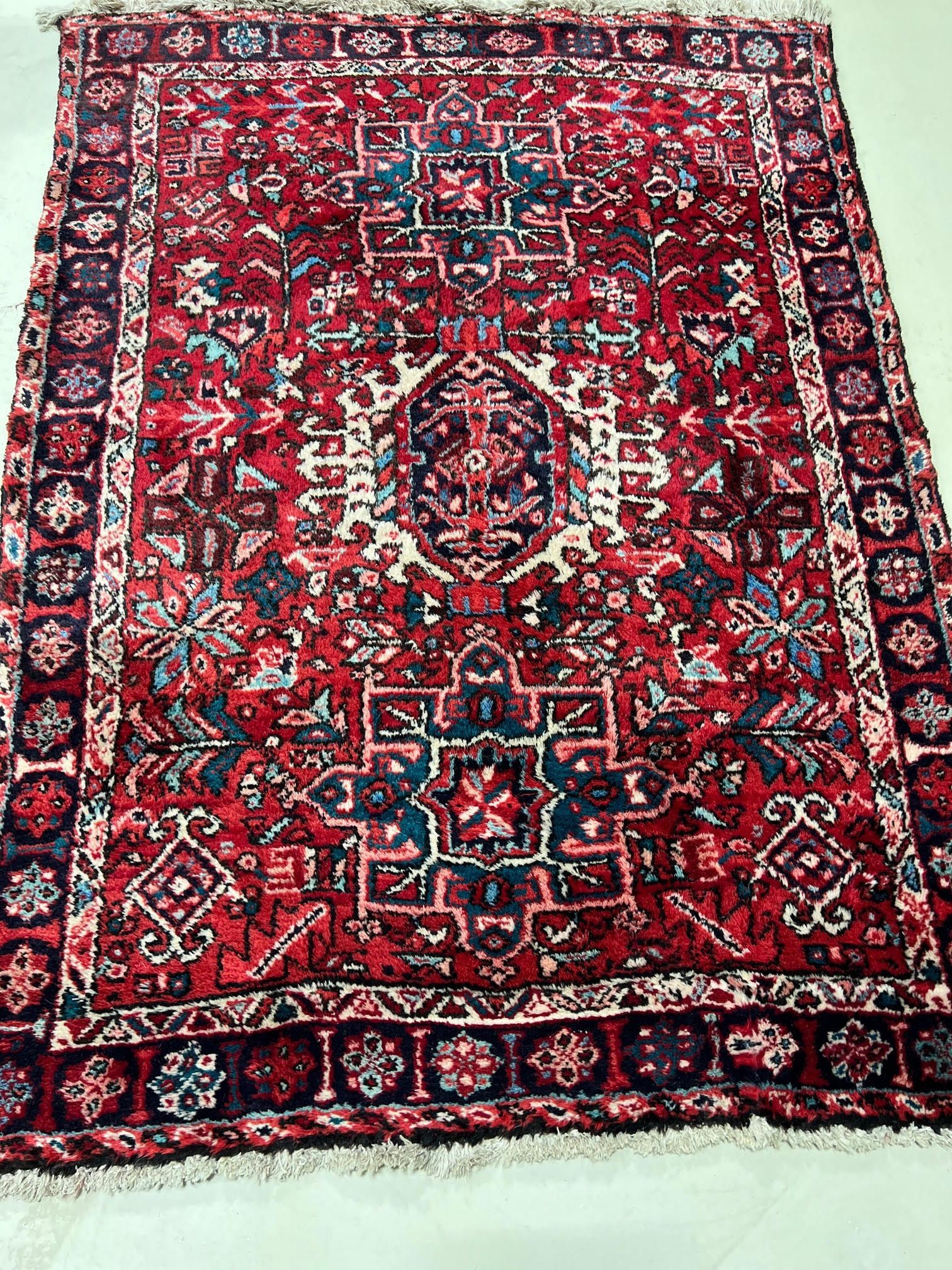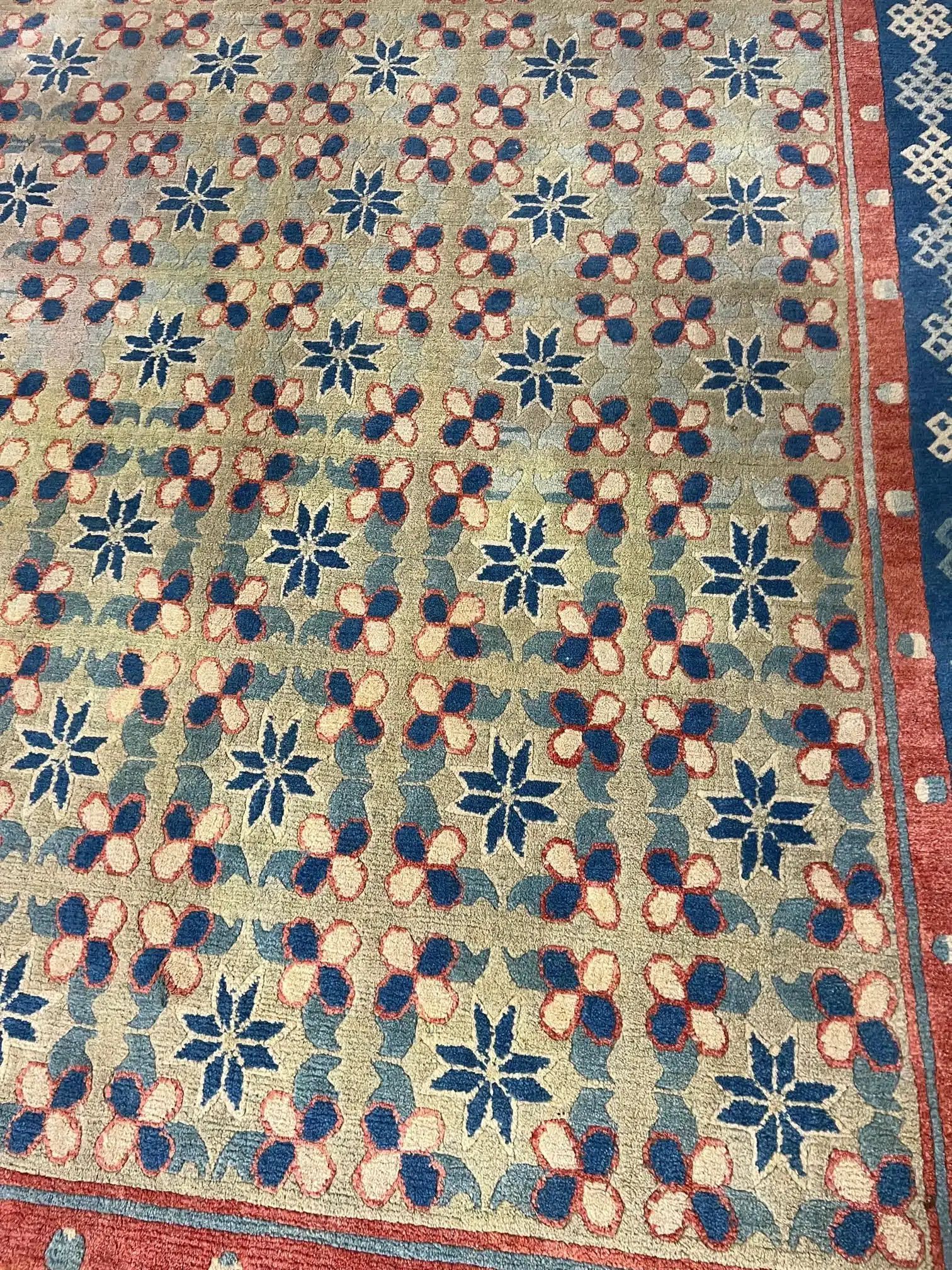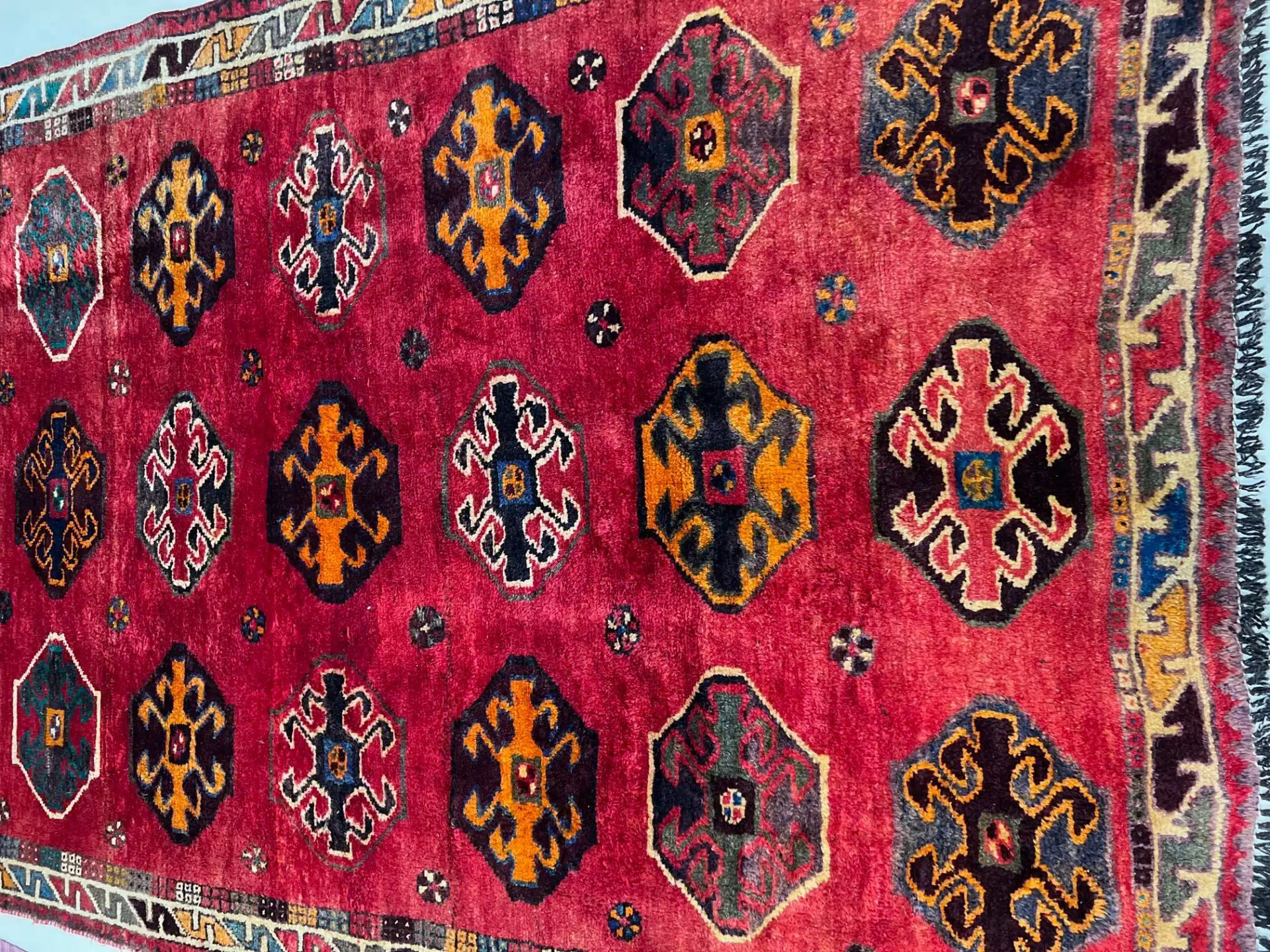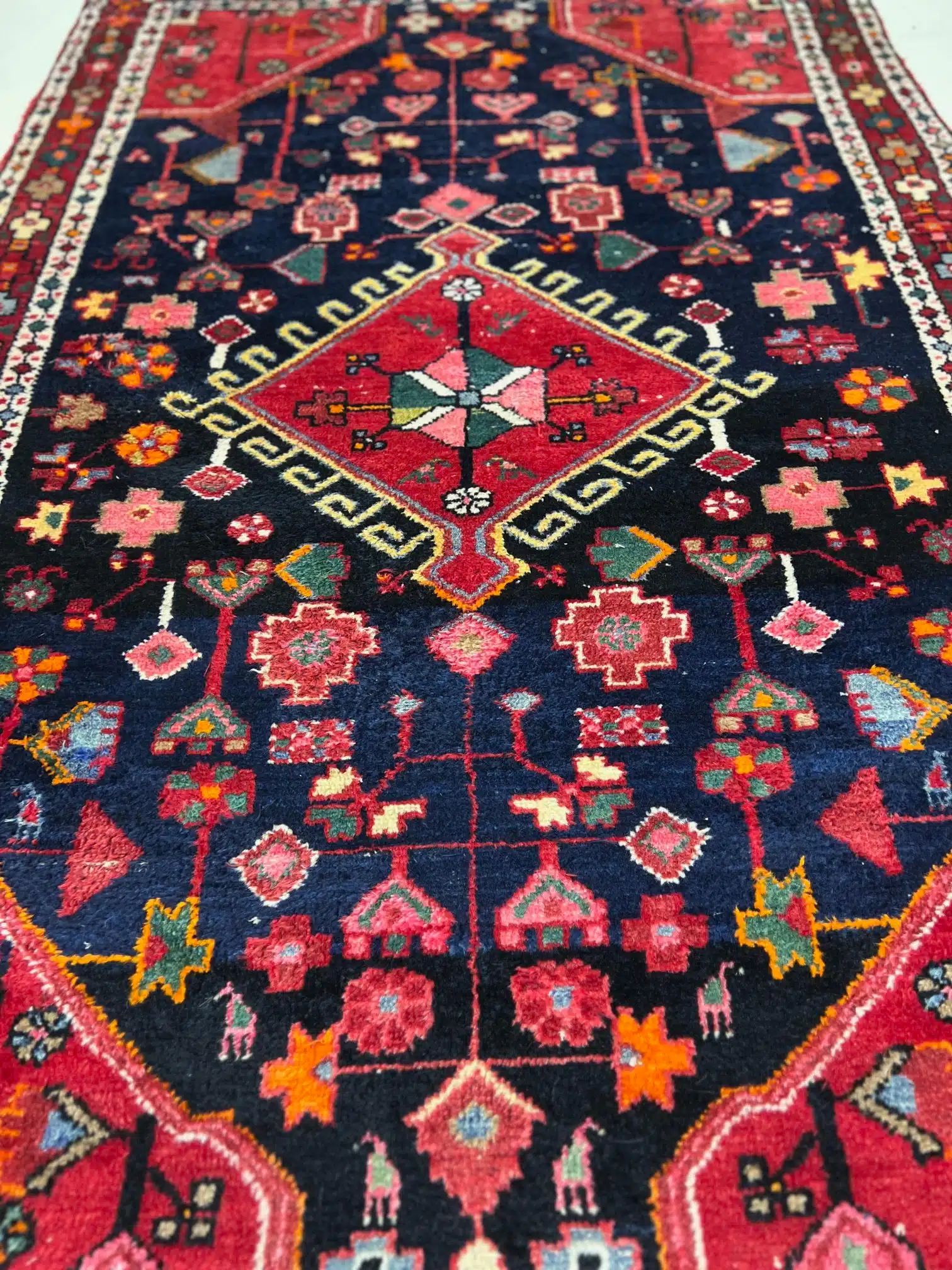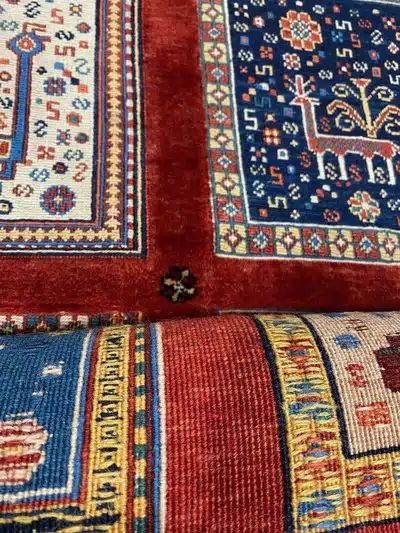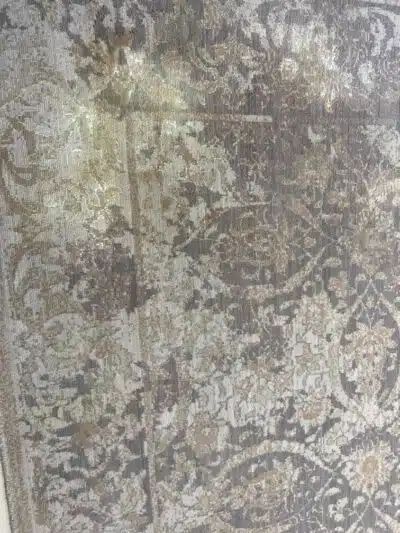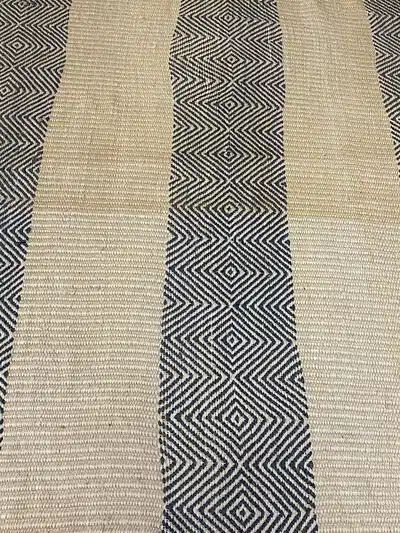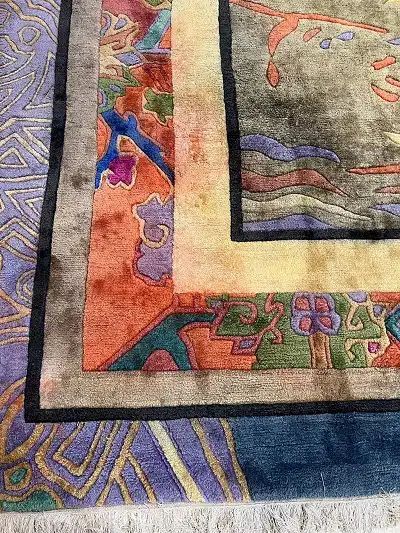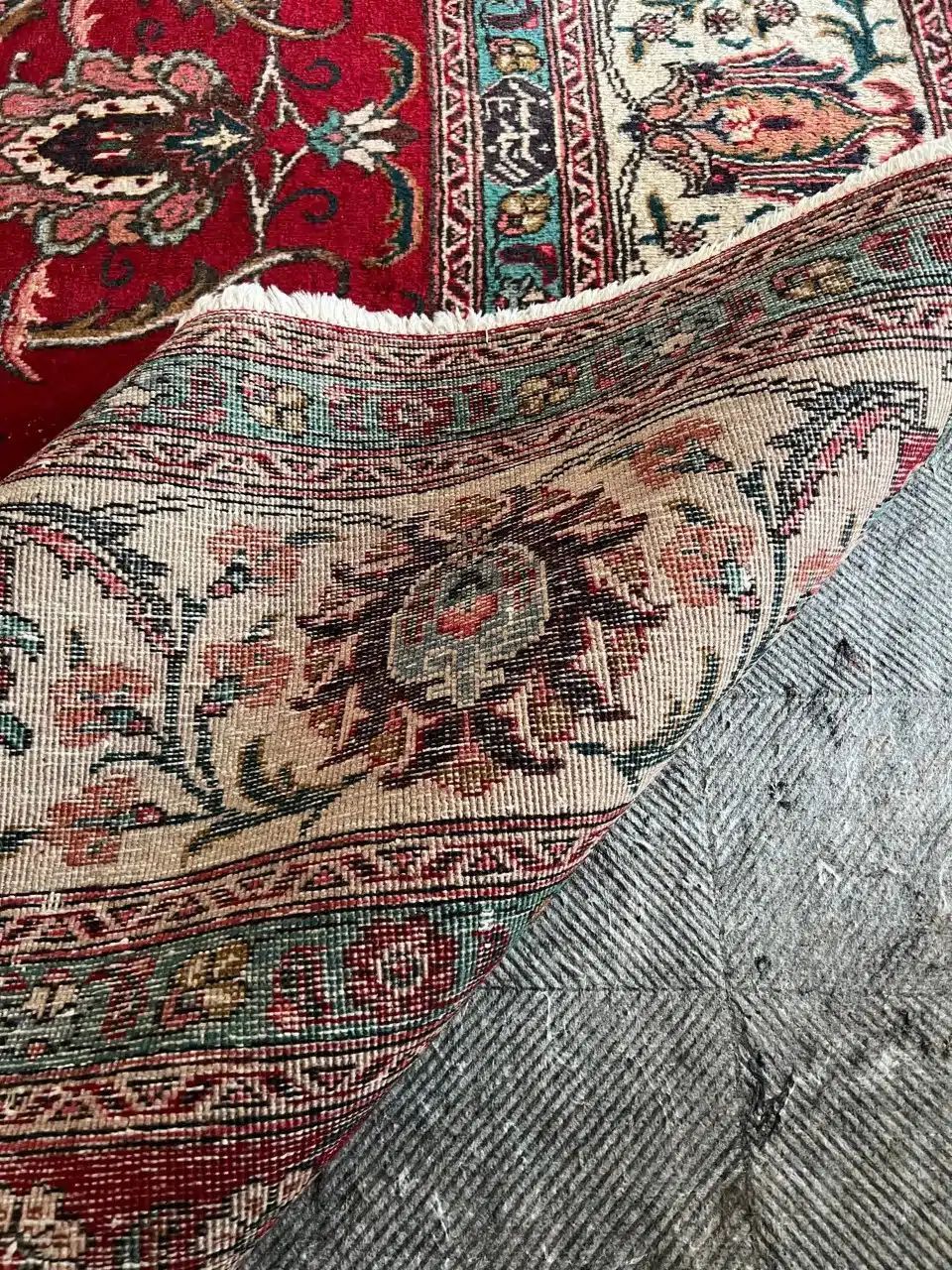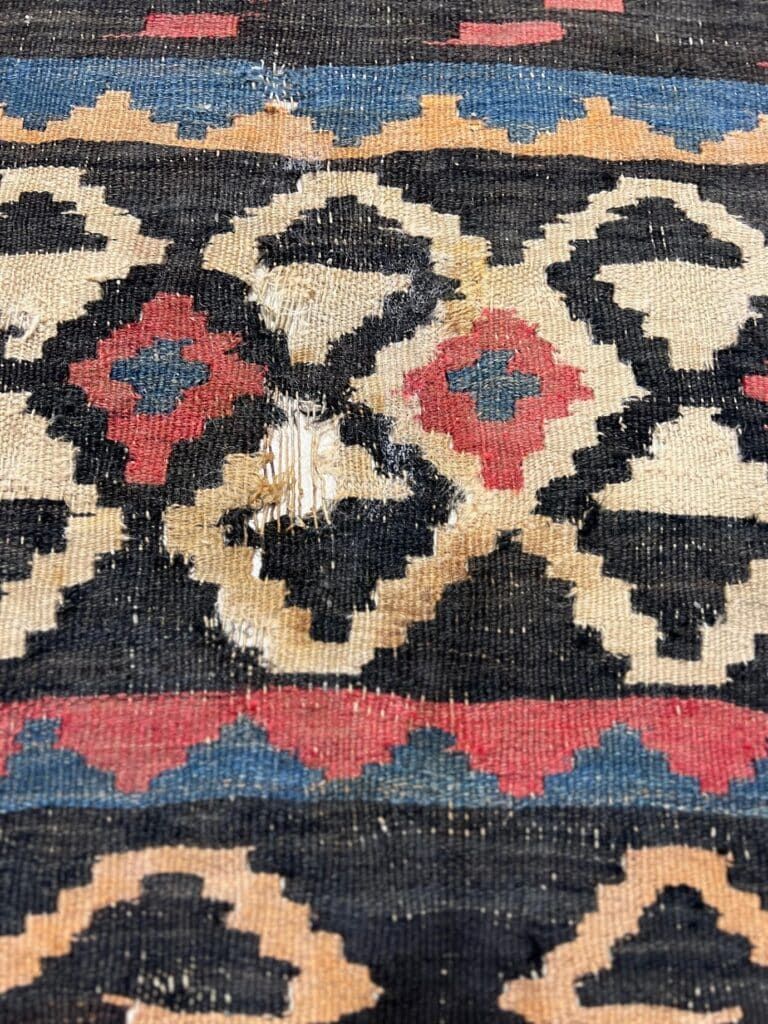The End of the ‘Court Period’ of the Persian Carpet
The Decline of Persian Rug Production
After its peak in the 16 th century, the production of Persian carpets declined. Around 1722 Isfahan, the capital of the Safavid Empire was destroyed after having been conquered by the Ghilzay Afghans. This brought an end to their localized carpet artistry which had been flourishing.
Bohkara Rugs
Then by the 19th century, things were really changing. Many nomadic tribes were thought of as a threat and forced to settle in specific locations. As this occurred, the treasured carpets, which held stories of their cultural identity, were sold and shipped to Europe.
Many of these were exported through Bohkara, a trading capital in Uzbekistan. Today, the Bohkara rug is reproduced in several countries although it originated with the Tekke Turkman people.
Bohkara rugs are usually colored with deep red hues and has a repeating geometric design. True Persian Bohkara carpets are made of wool and have a medium pile. They’re versatile, soft and durable.
Industrial Revolution’s Impact On Rug Production
Machine manufacturing changed the production of Oriental rugs. Although many are still hand-knotted in the traditional manner, mass-produced reproductions have flooded the marketplace. Since the 19th century, innovation in the design and technique of Persian rugs has slowed. That doesn’t mean that modern Oriental rugs can’t be of high quality; however, most rugs that are made today mimic antique styles.
Rug-makers in the 19th and 20th centuries focused on standardizing the process and outcome. As foreign companies invested in the Persian carpet industry, they developed replicable patterns and quality control measures.
Persian Rug Experts
The team at Aegis Rug Cleaning are an authority on the proper techniques to clean Persian Rugs from every era. If you need information on your rug and would like to get it cleaned, please reach out to our team. If you have questions about rugs visit our FAQ Page.
The post The End of the ‘Court Period’ of the Persian Carpet appeared first on The Austin Rug Cleaner.
